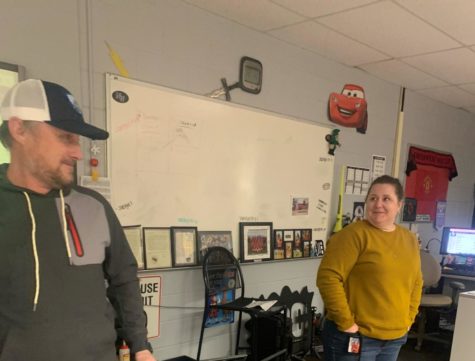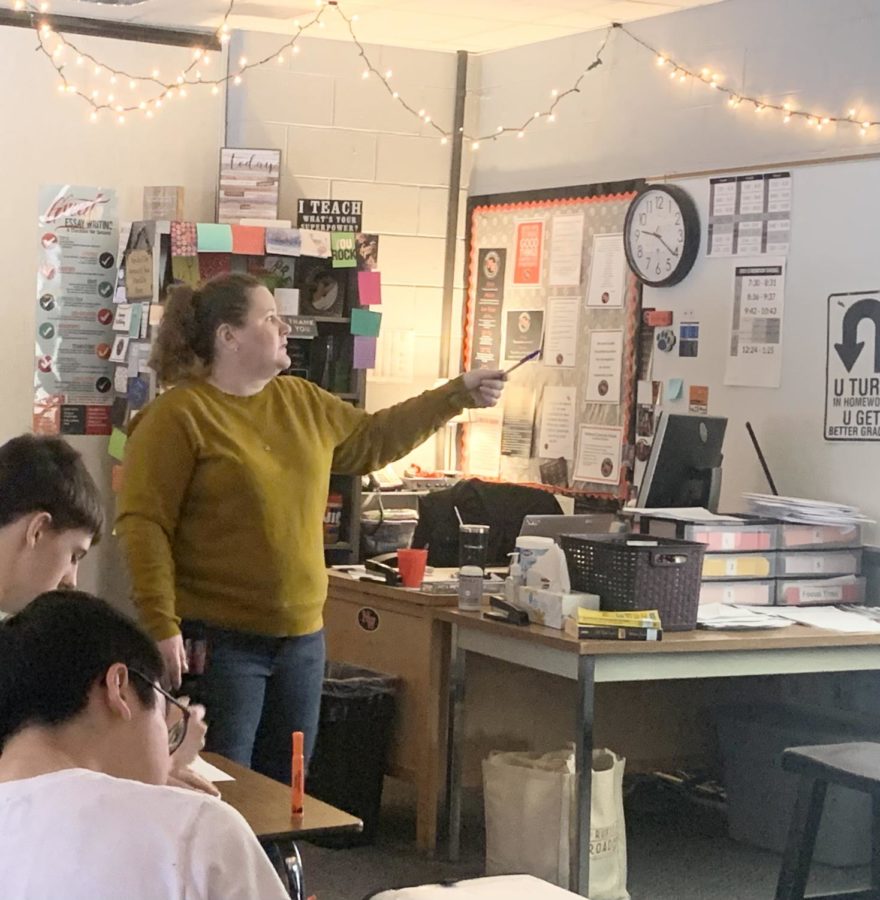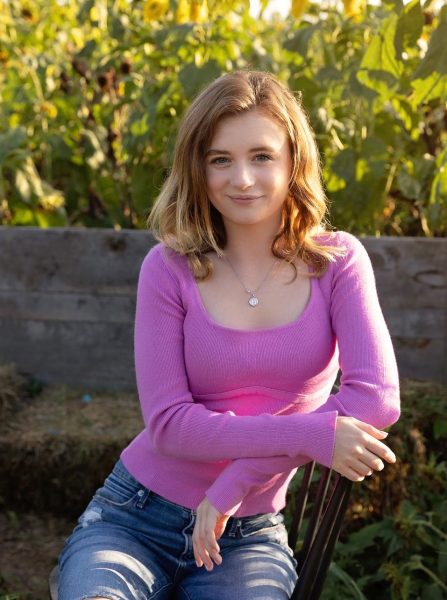Teacher transitions from Gen Ed to STEM
English teacher Katie Christner instructing her British Literature class on Romeo And Juliet.
Feb 8, 2023
Teaching is teaching, but when learning styles vary, communication will change depending on the audience. For English teacher Katie Christner, this is a new reality. After moving into the STEM program, she is adjusting to teaching traditional English classes and STEM on the same day.
While what she teaches may not change, her presentation style has to adjust based on the learning style of her students.

“English is taught by a unit of study with very specific standards. STEM is taught in PBLs or Project Based Learning. I have to integrate English into the concept of the build/project and how it specifically correlates with Physics,” said Christner.
STEM is geared toward hands-on learners, so things may need to be adapted to make English more applicable to that learning style.
“With staffing changes and a teacher shortage, it was necessary to help STEM. It helped keep the program going. STEM is huge for students, so Hammond is teaching manufacturing, and I am helping teach English,” said Christner.
Senior Grace Robison was a student of hers last year in her British Literature class.
“I absolutely loved having her as a teacher,” said Robison. “I would describe her teaching style as interactive and visual. She does an amazing job helping her students visualize the stories and discussion topics.”
Christner’s ability to adapt to a new teaching style shows her dedication and passion for the subject and her students.
“I always knew I wanted to teach. I decided on English in 9th grade when I read ‘The Tragedy of Romeo and Juliet’ by William Shakespeare. The drama, romance, plot twists, comedy, and historical connections resonated with me,” said Christner.
Now she assists Hammond and Ms. Whitely in the STEM program while teaching students like Junior Trey Howland-Griffin, who has Christner in STEM English.
“Christner is an enjoyable teacher,” said Howard-Griffin. “I have many memories of her joking around with Hammond and other students. It’s the small stuff that adds to the class.”
While things may change, this transition has impacted STEM and their new English teacher. The new ways she has had to adapt will affect her teaching methods in the future.
“Students have a different approach. They have a final vision or project in mind and then have to replicate or build it from the end product. This is the opposite of a typical English paper where we go from a prompt to brainstorming, to outlining, to rough drafts, to revisions and editing, to final copies,” said Christner.
Overall, teaching is teaching. And Christner has acquired the skills to be a good educator all around.




